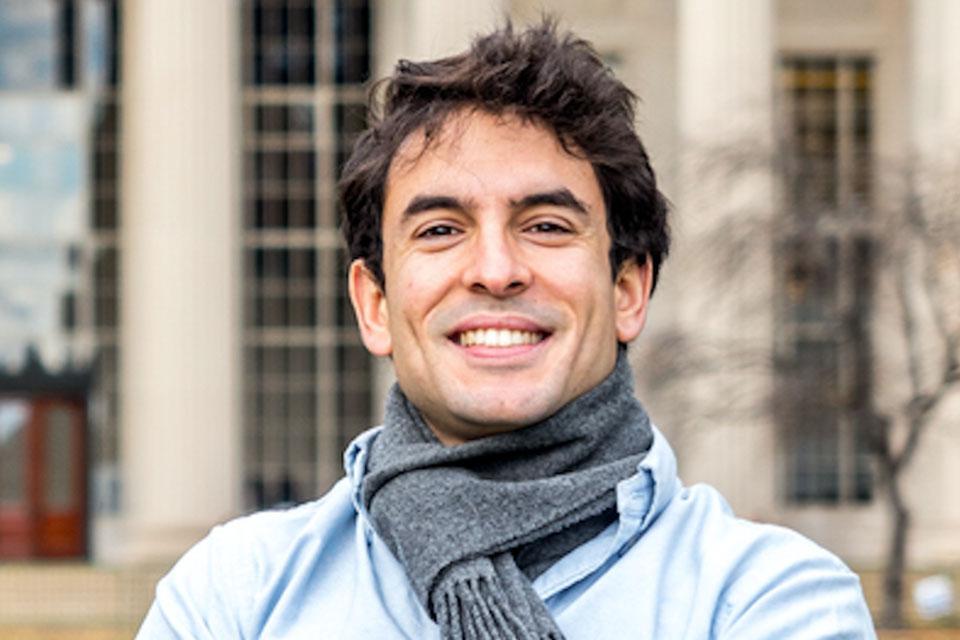We work among extraordinary people doing extraordinary things; get to know some of them by reading these quick-fire interviews.
Name: Juan Ruiz Ruiz
Job title: Postdoctoral Research Assistant, Oxford Plasma Theory group
What are you currently working on?
My research is on thermonuclear fusion energy. Nuclear fusion is the promise of limitless, clean, carbon-free and waste-free energy source that powers stars such as our sun. The stars that we see have a thermonuclear furnace in their interior, in which light atoms (hydrogen, helium, …) collide together at large energies and fuse to create heavier atoms. This process generates the energy that we see on earth in the form of radiated light and heat.
Stars confine the hot plasma that they are made of by using gravity. On earth, we use strong magnetic fields that confine the hot plasma (more than one hundred million degrees!) in machines called tokamaks and stellarators. Despite the strong thermally insulating and confining properties of the magnetic field, the large temperature differences in the plasma drive micro-instabilities and turbulence. Turbulence is very efficient at mixing substances and transporting heat (think of stirring your hot coffee cup, or turbulence in a jet engine to increase fuel mixing!). For magnetic fusion, turbulence results in a detrimental leakage of heat and particles that effectively cools the core of the plasma, preventing efficient generation of the fusion process.
My research relies on understanding how turbulence exhausts the heat from fusion devices such as tokamaks, with a focus on understanding the effect of supra-thermal particles on the plasma. The fusion plasma temperatures are in the order of 10 keV (~ 100 million degrees). In order to maintain those temperatures, the plasma needs to be heated by higher temperature particles (suprathermal particles) by means of neutral beams (small particle accelerators), microwaves (think how your microwave oven heats your food), or by generating high energy alpha particles (MeV) from fusion. The effect that these suprathermal particles have on the rest of the plasma is not currently understood, and lies at the frontier of fusion energy research. Self-heating the plasma by the high energy fusion particles is the ultimate goal of fusion: we call this a burning plasma, in a similar way that a fire burns a match by itself following the initial spark. Several experiments nowadays are reaching burning or close-to-burning plasma scenarios, including a recent fusion energy record at the JET tokamak [Major breakthrough on nuclear fusion energy, Jonathon Amos, BBC News, 9 February, 2022] and at NIF [Burning plasma achieved in inertial fusion, A B Zylstra et al, Nature (2022)]. Suprathermal plasma particles are predicted to play the most pivotal role in new burning plasma regimes that will characterise fusion reactors in the future, and is therefore one of the most potentially transformative fields in fusion energy science research.
Describe a typical day
My working day generally starts in my office at our wonderful Beecroft building. After responding to some correspondence and taking care of important admin tasks, some days are filled with meetings, either in person or remotely (group meetings, collaboration meetings for projects, student supervision, …), which is usually accompanied by some eventual teaching and driving my own research.
I usually enjoy lunch in the good company of my group’s members or other friends at some nearby place, to continue work into the afternoon with the help of coffee. In the late afternoon I head home and practice some sport (running, exercising), after which I usually get back to doing small amounts of low-intensity work such as low priority admin tasks, emails, etc. My day usually ends with a book in bed, news or a short show.
If you had an entire day at your disposal (not at work), what would be your ideal way to spend it?
I would prioritise spending quality time with the people that I treasure most. I would also love to spend it with my Samoyed dogs back in Spain, visiting the beach and fishing. I also love to travel and discover new places and foods.
What is your favourite place in Oxford?
I love the city of Oxford when it is at its most peaceful – early in the morning, late at night, and in vacation periods. I also like nearby places to Oxford such as Wytham woods, Bagley woods and Boars Hill, where I like to head for hikes and walks in good company. In the city of Oxford, I like unique authentic places such as the Covered Market.
Plan B: what would you be if you weren’t doing the job you are currently doing?
If I wasn’t working on nuclear fusion, I would probably be working on aeronautical and aerospace engineering, or in astrophysics.
What discovery would you like to see in your lifetime?
I am very biased, but I would like to see nuclear fusion energy on the electricity grid in my lifetime. I would like to see the reversal of climate change with the help of fusion. This would mean that I contributed a teeny tiny grain of sand to leave a world that is better than the one that I encountered when I was born. I would also like to see a unified theory of everything in physics, merging quantum mechanics and general relativity.

